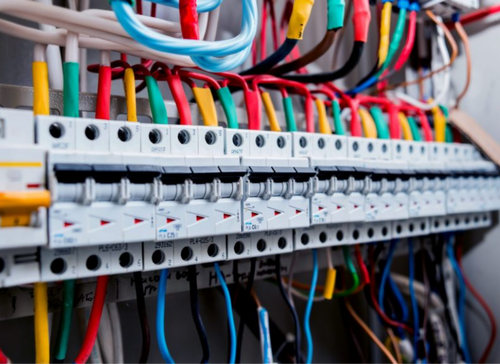Tailored BRE Electrical Solutions for Homes and Organizations
Tailored BRE Electrical Solutions for Homes and Organizations
Blog Article
The Ultimate Guide to Electric Setup: Tips and Techniques for a Safe and Efficient Home Electrical Wiring System
In the world of home upkeep, couple of aspects are as important yet commonly overlooked as the electrical circuitry system. By checking out the nuances of electric safety procedures and energy-saving techniques, this thorough guide will lose light on the details of home electrical wiring, encouraging individuals to take fee of their household's electrical infrastructure.
Understanding Electrical Safety And Security Measures
To make sure the safety and security of both people and property, understanding and executing correct electrical safety and security procedures is vital in any kind of home wiring job. It is essential to conduct a detailed assessment of the electrical system before beginning any type of electrical wiring job to determine possible hazards or issues that need to be resolved.
In addition, utilizing the ideal devices and equipment is essential for maintaining safety during electric installments. Shielded gloves, voltage testers, and protective eyewear are several of the fundamental safety and security gear that must be used to stop electric shocks or crashes. It is likewise essential to de-energize circuits before functioning on them and to label all circuits and breakers plainly to avoid complication.

Important Tools for Home Circuitry
Ensuring the appropriate implementation of electrical security steps in home wiring jobs includes using a details collection of crucial devices developed to help with the installation process properly and securely. Some of the trick tools needed for home circuitry projects consist of a voltage tester for examining live wires, cable pole dancers for eliminating insulation from cords, a wire cutter for exactly cutting wires to length, a screwdriver set for safeguarding electrical components, electrical tape for insulation and protecting links, a cable ripper for removing cord sheathing, and a multimeter for gauging voltage, existing, and resistance.
Step-by-Step Electrical Installment Guide
Starting an electric installation task needs precise preparation and adherence to security standards. Before starting any kind of job, guarantee you have a detailed strategy laying out the format of the electric system, consisting of the placement of electrical outlets, buttons, and components. Take right into account the power needs of each gadget to identify the appropriate cable gauge and breaker sizes.
The initial step in the setup process is to shut down the power supply to the area where you will certainly be functioning. Make use of a voltage tester to validate that the circuits are de-energized before touching any type of wires. Next, very carefully eliminate existing components or electrical outlets and disconnect the wires.
When mounting new electrical wiring, run wires through walls and ceilings, protecting them in position with proper installations. Follow local building regulations and maker guidelines for appropriate cable setup and connections. BRE Electrical Melbourne. Make certain to label wires for easy identification and future upkeep

Troubleshooting Common Electrical Wiring Issues
Having finished the installation procedure as described in the previous subtopic, fixing common circuitry problems is an important skill for ensuring the security and performance of your electrical system. One usual problem is a stumbled circuit breaker, typically triggered by check my source overloaded circuits or a brief circuit. To fix this, situate the breaker panel, recognize the tripped breaker by looking for the one not totally in the "on" setting, and reset it by turning it totally to "off" and afterwards back to "on." An additional widespread issue is a damaged electrical outlet, characterized by no power or recurring power supply. Make sure the outlet is not managed by a button, then utilize a voltage tester to check for power. If there is no power, switch off the circuit, inspect the circuitry connections for any kind of loosened or damaged cords, and change the electrical outlet if essential. Continuously flickering lights can show loose circuitry connections or an overloaded circuit. To resolve this, check and tighten all cable links in the impacted components and switches and rearrange the lots on the circuit to stabilize the electrical demand. Consistently evaluating and quickly resolving these typical circuitry issues will certainly maintain the security and performance of your home electrical system.
Tips for Energy-Efficient Electric Systems
For optimum energy performance in electrical systems, applying clever methods and using energy-saving modern technologies is vital. One vital pointer for accomplishing an energy-efficient electric system is his response to upgrade to LED lights. Appropriate insulation and securing of windows, doors, and electric outlets can also avoid energy loss, eventually minimizing the work on electrical systems.
Verdict
In final thought, carrying out proper safety measures, making use of crucial tools, following a detailed installment guide, repairing typical issues, and integrating energy-efficient suggestions are critical for a secure and efficient home circuitry system. By sticking to these practices, property owners can make sure the durability and performance of their electrical setups. It is necessary to prioritize safety and performance when it pertains to electrical job Check This Out in order to stop possible threats and to keep a reliable electric system in the home.
Report this page